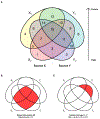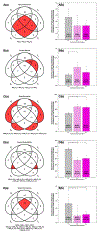Measures of Information Content during Anesthesia and Emergence in the Caenorhabditis elegans Nervous System
- PMID: 37027802
- PMCID: PMC10266588
- DOI: 10.1097/ALN.0000000000004579
Measures of Information Content during Anesthesia and Emergence in the Caenorhabditis elegans Nervous System
Abstract
Background: Suppression of behavioral and physical responses defines the anesthetized state. This is accompanied, in humans, by characteristic changes in electroencephalogram patterns. However, these measures reveal little about the neuron or circuit-level physiologic action of anesthetics nor how information is trafficked between neurons. This study assessed whether entropy-based metrics can differentiate between the awake and anesthetized state in Caenorhabditis elegans and characterize emergence from anesthesia at the level of interneuronal communication.
Methods: Volumetric fluorescence imaging measured neuronal activity across a large portion of the C. elegans nervous system at cellular resolution during distinct states of isoflurane anesthesia, as well as during emergence from the anesthetized state. Using a generalized model of interneuronal communication, new entropy metrics were empirically derived that can distinguish the awake and anesthetized states.
Results: This study derived three new entropy-based metrics that distinguish between stable awake and anesthetized states (isoflurane, n = 10) while possessing plausible physiologic interpretations. State decoupling is elevated in the anesthetized state (0%: 48.8 ± 3.50%; 4%: 66.9 ± 6.08%; 8%: 65.1 ± 5.16%; 0% vs. 4%, P < 0.001; 0% vs. 8%, P < 0.001), while internal predictability (0%: 46.0 ± 2.94%; 4%: 27.7 ± 5.13%; 8%: 30.5 ± 4.56%; 0% vs. 4%, P < 0.001; 0% vs. 8%, P < 0.001), and system consistency (0%: 2.64 ± 1.27%; 4%: 0.97 ± 1.38%; 8%: 1.14 ± 0.47%; 0% vs. 4%, P = 0.006; 0% vs. 8%, P = 0.015) are suppressed. These new metrics also resolve to baseline during gradual emergence of C. elegans from moderate levels of anesthesia to the awake state (n = 8). The results of this study show that early emergence from isoflurane anesthesia in C. elegans is characterized by the rapid resolution of an elevation in high frequency activity (n = 8, P = 0.032). The entropy-based metrics mutual information and transfer entropy, however, did not differentiate well between the awake and anesthetized states.
Conclusions: Novel empirically derived entropy metrics better distinguish the awake and anesthetized states compared to extant metrics and reveal meaningful differences in information transfer characteristics between states.
Copyright © 2023 American Society of Anesthesiologists. All Rights Reserved.
Conflict of interest statement
Conflicts of Interest
None.
Figures





Comment in
-
Anesthesia and the Merry-go-round of Information in the Brain.Anesthesiology. 2023 Jul 1;139(1):4-5. doi: 10.1097/ALN.0000000000004571. Anesthesiology. 2023. PMID: 37279104 No abstract available.
References
-
- Shannon CE: A mathematical theory of communication. The Bell System Technical Journal 1948; 27: 379–423
-
- Lipping T, Saareleht J, Olejarczyk E, Sonkajärvi E, Ylinen T, Jäntti V: Synchronization of brain activity during induction of propofol anesthesia: Comparison of methods, 38th Annual International Conference of the IEEE Engineering in Medicine and Biology Society, 2016, pp 5505–5508 - PubMed
Publication types
MeSH terms
Substances
Grants and funding
LinkOut - more resources
Full Text Sources
Medical

